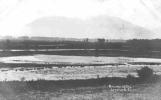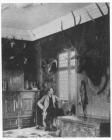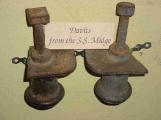13
"The fate of the then Federal Government was bound up hand and foot with the success of the railway. The British Columbia Government, recognising the great mistake they had made, declared that the concessions would have to be annulled if I did not agree that the turning of the Kootenay river be done away with, and instead of it there should be constructed a small navigable canal, provided with a lock to overcome the difference in the two water levels."It was not until the summer of 1887 that the canal plans, officially approved by the two governments, were handed to me. By dint of hard work I completed the canal within the prescribed time limit; it was a job I can honestly recommend to those desirous of committing suicide in a decent, gentlemanly manner."
- William-Adolph Baillie-Grohman, as read by John Hopcraft
15
"A word must still be said about the fate of that large block of splendid agricultural land in Lower Kootenay covered by my concession. These 48,000 acres I had proposed to reclaim from the annual summer overflow by turning the Kootenay river. When that intention had to be abandoned, an equally effectual cure presented itself. It was to widen and deepen the only outlet of Kootenay lake. By so doing an increased outflow was made possible, and, in consequence, the dangerous rise of the Kootenay river would have been prevented."I had already spent several thousand pounds in beginning this extensive but perfectly easy work, when I finally decided that to continue my single-handed legal fights with the Government, was beyond my power."
- William-Adolph Baillie-Grohman, as read by John Hopcraft
17
"In 1893 he returned to Europe with a very sore head vowing that he would never listen to anything about the Kootenay River again."- Bill Constable
19
The little steamship Midge fared somewhat better. Baillie-Grohman used the vessel to transport people and goods up and down the lake until 1884, when it was moored along the Kootenay River's bank near Rykerts, the customs office south of Creston.21
In 1888, J.W. Cockle found the ship there, now sunken and filled with mud; he emptied it out, got it afloat, and purchased it from Baillie-Grohman.23
For another six years, under the ownership of Cockle and later Thomas J. Davis, the Midge continued as a means of transportation in support of the growing mining industry surrounding Kootenay Lake. By the summer of 1894, however, it had been abandoned on the south bank of the Kootenay River, where it lay until 1997.24
The rudder from the S.S. Midge. This is one of the few remaining pieces of the Midge.1885
Creston Museum, Creston, BC






